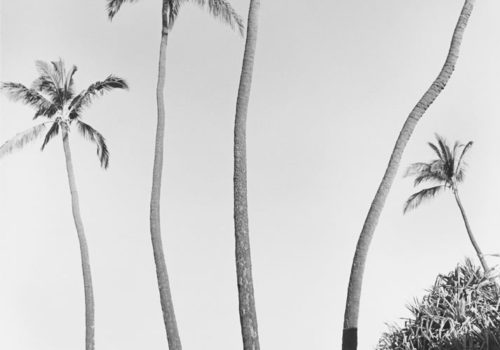The exhibition tackles the discourse about “place” – a major concern and challenge in contemporary Israeli photography – while addressing key issues in contemporary photography, related to the modes of seeing and representation that this medium makes possible. The thirty photographs on view span a variety of representations of places ranging from landscapes, through military and civilian sites, to private domestic space and portraits of people taken in their surroundings. These spaces are depicted through a variety of photographic approaches ranging from direct photography, with some measure of digital processing (either overt or indiscernible), to photography that is the product of utter simulation (which at times mimics the look of direct, traditional photography, and at other times declares itself fictional and fantastic).
The critical approaches most prevalent in Israeli landscape photography – which has been the main subject of Israeli photography over the past twenty years – has been mainly influenced by Americans “New Topographers” and by the German typological approach, two schools that are closely connected. Following in their footsteps, a lively local discourse about landscape has ensued, focusing, among other themes, on military remains in bare landscapes, urban architecture and modes of habitation. In that context a poetic of the banal has also developed in Israel, and “backyard aesthetics.” Over the past few years critical discourse in Israeli photography seems to have become more conceptually inclined – not in the theoretical sense of an inquiry into the nature of art (as in conceptual 1970s art), but as a functional tool used mainly to examine the relation between a photograph and an image of reality.
The exhibition stretches from an image of Israeli soldiers and Egyptian POWs under Egyptian bombardment, in a photograph taken by Micha Bar-Am – on site and in real time – by the Suez Canal in October 1973, to metal soldiers photographed by Miki Kratsman in 2008, which are part of a battlefield model of a battle fought in 1948. Kratsman, who over the years has taken quite a few photographs of wars and uprisings “in the field,” photographs this representation of a battle (the Yad Mordechai battle against the Egyptian army, one of the hardest battles of the 1948 War) sixty years later and from quite a distance, emphasizing the soldiers’ appearance as miniature toy soldiers. In-between these two battlefield images, a long line of soldiers marches in the desert in Aviv Naveh’s photograph from 2005, while a flock of birds flies above in splendid “military” formation. Naveh uses the military imagery in order to examine codes of group behavior and principles of order and regimentation typical of heterotopia. Adi Nes, in a photograph taken in 2000, stresses the gentleness and vulnerability of the soldier sleeping in a tent, whose loosely hanging hand brings to mind the well-known image of The Death of Marat by Jacques-Louis David (1793). In Yigal Felik’s The Sleep of the Warrior (2009) a soldier sleeps by a flickering fire, but the special glasses required in order to view the stereoscopic image relegate the military scene to the sphere of cinematic 3D special effects. In Deganit Berest’s 1990 photograph the image of a bathing figure is broken up into the grainy specks of a silver print, while in another of her photographs, taken in 2008, a figure is blown up to the point of abstraction and is fractured into the colorful rectangles of digital pixels. In a color photograph taken by Ori Gersht in 1998 in post-war Sarajevo the photographic paper seems to be about to collapse under the density of this image of a swimming pool crowded with bathers. And a black-and-white photograph by Ohad Matalon (2009-10) fuses together both positive and negative images of a photograph depicting an oasis, which is printed on wallpaper that is peeling off, exposing the wall underneath.
Undermining the documentary quality of the photographic medium casts doubt on the authority of photography, and in fact on the critical power of any aesthetic language. The status of artistic means and of the gaze rises instead, as critical signs set against representations of possible realities.
Making Room: Contemporary Israeli Photography
Until 31 July 2012
Tel Aviv Museum of Art
Herta and Paul Amir Building
Doron Sebbag–Ors Ltd. Photography Gallery
27 Shaul Hamelech Blvd
Tel Aviv, 61332
Israel
















